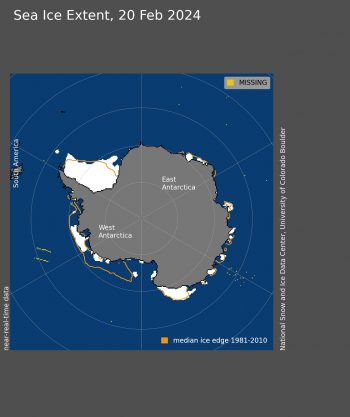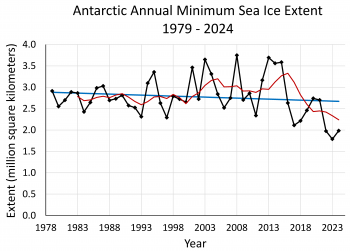https://nsidc.org/arcticseaicenews/
February 28, 2024
On February 20, Antarctic sea ice likely reached its minimum extent of 1.99 million square kilometers (768,000 square miles), tying for second lowest extent in the 1979 to 2024 satellite record. This is the third consecutive year that Antarctic sea ice has reached a minimum below 2.0 million square miles (772,000 square miles).
Please note that this is a preliminary announcement. Changing winds or late-season melt could still reduce the Antarctic ice extent. NSIDC scientists will release a full analysis of the Antarctic and Arctic February conditions in early March.


Figure 2b. This graph shows Antarctic annual sea ice minimum extent, depicted as black diamonds, from 1979 to 2024, based on a 5-day running average of daily extent. The linear trend line is in blue with a 1.7 percent per decade downward trend, which is not statistically significant. A five-year running average is shown in red.